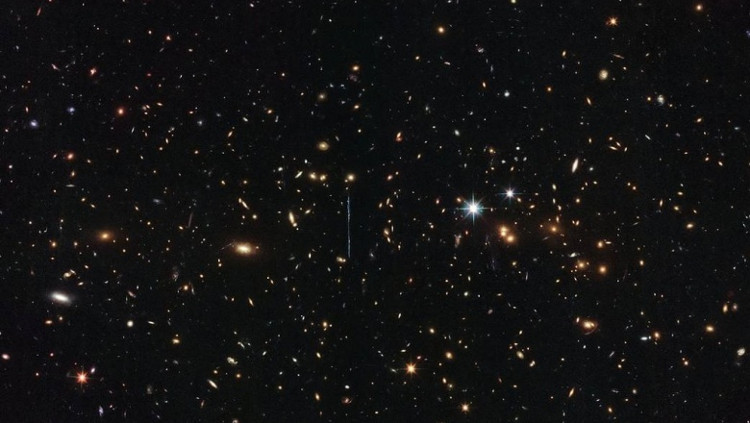The galaxy cluster has three million billion times the mass of the Sun.
captures new images of El Gordo cluster of galaxies 7 billion light-years from Earth.
NASA announced a new image from the Hubble Space Telescope to the galaxy cluster ACT-CLJ0102-4915 , also known as, having a mass of three million billion solar times, UPI reported on January 16.

Image of El Gordo galaxy cluster in the universe.(Photo: NASA).
El Gordo in Spanish means "Big fat". This is the largest, brightest and hottest cluster of galaxies discovered in outer space. This cluster of galaxies is 7 billion light years from Earth.
First discovered in 2012 thanks to a trio of telescopes, including NASA's, El Gordo is essentially the result of millions of years of collisions taking place in two galactic clusters.
Scientists believe that the formation and development of galaxy clusters is strongly influenced by. Studying galaxy clusters can help them better understand dark matter and dark energy.
Evidence shows El Gordo's "normal" matter , mostly composed of glowing hot gas within the wavelength of the X-ray beam, being separated from dark matter in the collision. Hot air is slowing but dark matter is not, NASA said.
El Gordo is one of 41 giant galaxy clusters that research scientists in the RELICS project aim to identify distant galaxy clusters to study. This telescope is expected to launch into space in the following year.
- The galaxy cluster is 500 billion billion times heavier than the Sun.
- The mass of the Milky Way
- The Milky Way has a mass of 700 billion times the Sun.
- Find the oldest cluster of galaxies
- Detecting the minimum mass of the galaxy
- The early galaxy cluster is 12.4 billion light-years away from Earth
- Discovered 'carnivorous galaxies' in the star cluster of Heavenly Star
- Two clusters of galaxies contain hundreds of billions of stars about to collide
- New exciting globular cluster in the Milky Way galaxy
- Detecting spiral galaxies in the early universe
- Detecting star clusters 30 million times brighter than the Sun.
- Detecting monster black holes as large as 1 billion Sun.
 Van Allen's belt and evidence that the Apollo 11 mission to the Moon was myth
Van Allen's belt and evidence that the Apollo 11 mission to the Moon was myth The levels of civilization in the universe (Kardashev scale)
The levels of civilization in the universe (Kardashev scale) Today Mars, the sun and the Earth are aligned
Today Mars, the sun and the Earth are aligned The Amazon owner announced a secret plan to build a space base for thousands of people
The Amazon owner announced a secret plan to build a space base for thousands of people